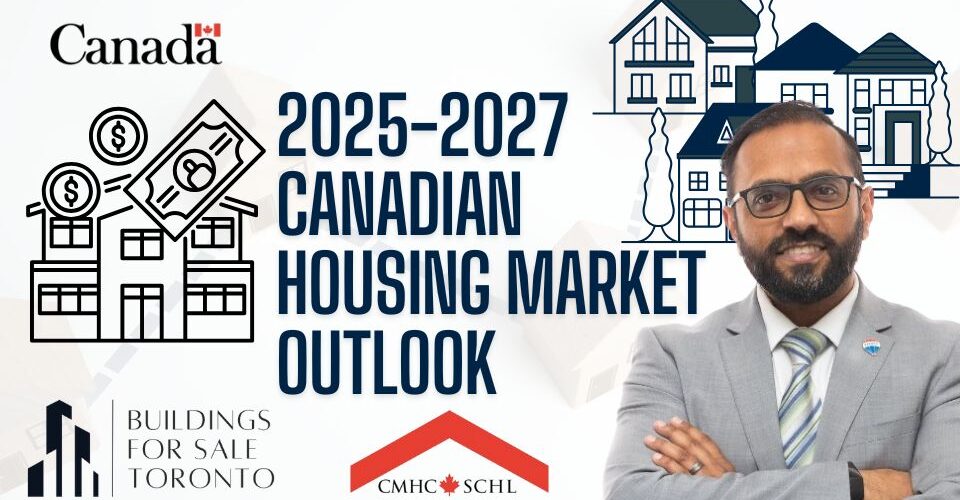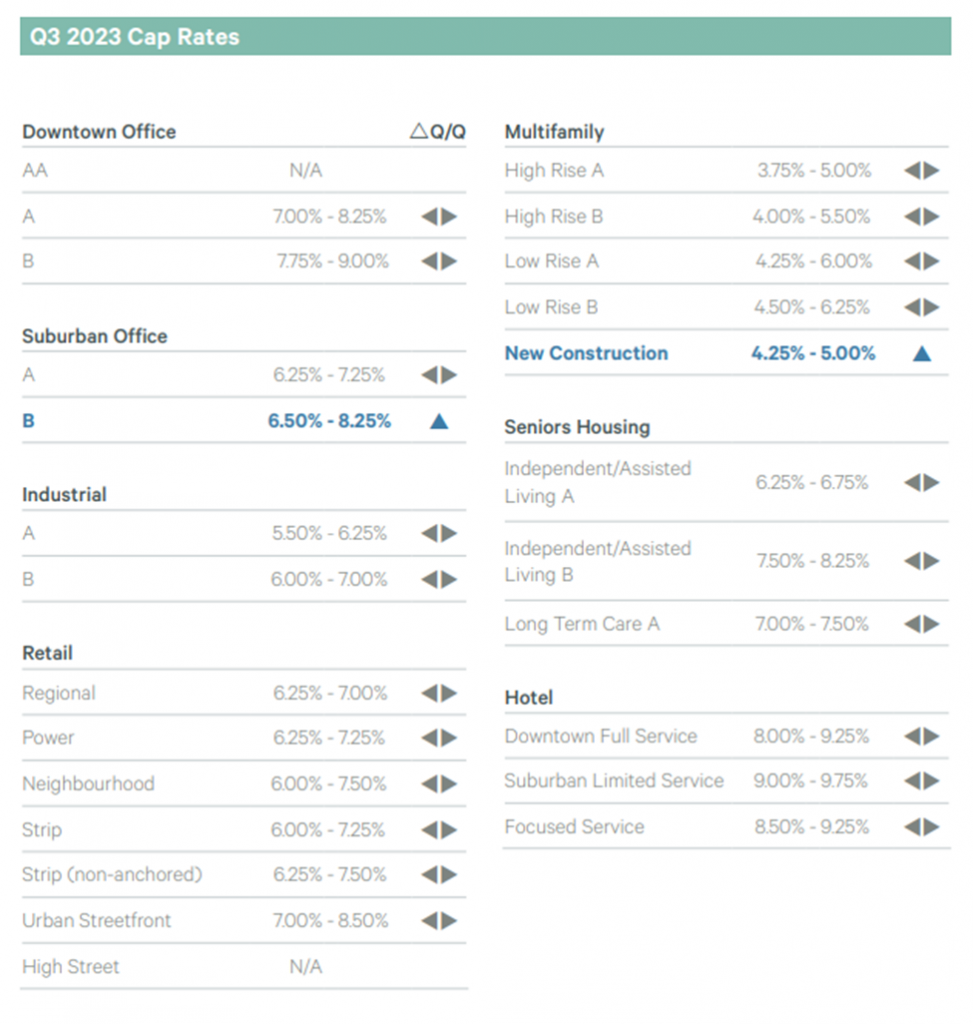2025-2027 Canadian Housing Market Outlook: Where Should Investors Focus?
Let’s cut through the jargon. If you’re eyeing Canadian real estate for your next investment property, 2025 might be your year—but only if you know where to look. The CMHC’s latest report reveals a market in flux, with opportunities hiding in plain sight for savvy investors. Here’s what you need to know, served straight up.
The Big Picture: What’s Shaping Canada’s Market?
- Mortgage Rates Are Dropping (Finally!)
Good news for buyers: Variable-rate mortgages are about to get way more attractive. With the Bank of Canada likely to cut rates further in 2025, borrowing costs are easing. This means pent-up buyer demand—especially for resale homes—will explode. Think first-time millennials, downsizers, and those escaping brutal rental markets. - Condos Are Struggling, Rentals Are King
Here’s the twist: Condo construction is slowing hard (-15% in Toronto alone for 2025) because investors are spooked. But purpose-built rentals? They’re booming. Governments are throwing cash at developers to build rentals (think tax breaks, faster permits), and tenants are still desperate. Vacancy rates will creep up, but rents won’t crash—landlords just won’t have as much pricing power. - Affordability Is Still a Nightmare (But That’s Your Advantage)
Let’s be real: Most Canadians can’t afford a detached home. That’s why townhouses and semi-detached units in commuter zones (looking at you, Hamilton and Oshawa) are heating up. Families want space without the $1.5M price tag.
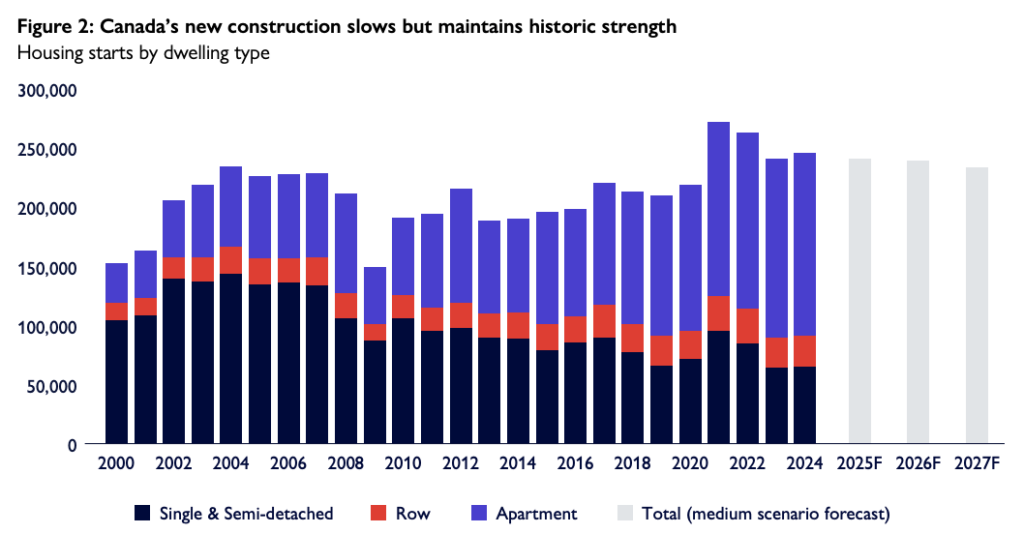
Where to Buy: 3 Markets Poised for Growth
1. Toronto’s Suburbs: Skip the Condo, Buy the Rental
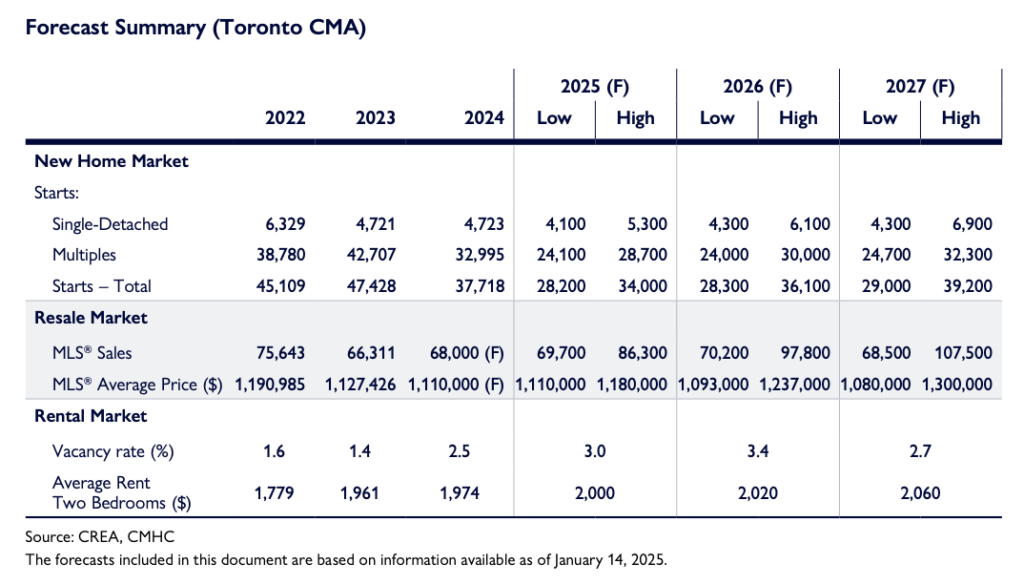
- Why It Works:
Toronto proper is a condo graveyard right now—too many investors stuck with units they can’t sell or rent profitably. But the 905 regions (Mississauga, Vaughan, Pickering) are a goldmine for multi-unit rentals. The feds are fast-tracking approvals here, and rents for a 2-bedroom will hit $2,300+ by 2027. - 2025 Rent Forecasts for GTA Suburbs (2-Bedroom Units):
- Mississauga: $2,100–$2,200/month (up 5% from 2024)
- Brampton: $1,950–$2,050/month (up 6%)
- Pickering/Ajax: $1,900–$2,000/month (up 7%)
- Oshawa: $1,720–$1,800/month (up 8%)
- Hamilton: $1,650–$1,750/month (up 6%)
Source: CMHC 2025 Rental Market Outlook - Pro Tip: Look for older low-rise apartments near transit. Renovate units between tenants, and you’ll pocket $400–$600/month cash flow even with higher vacancies.
2. Calgary & Edmonton: The New Affordable
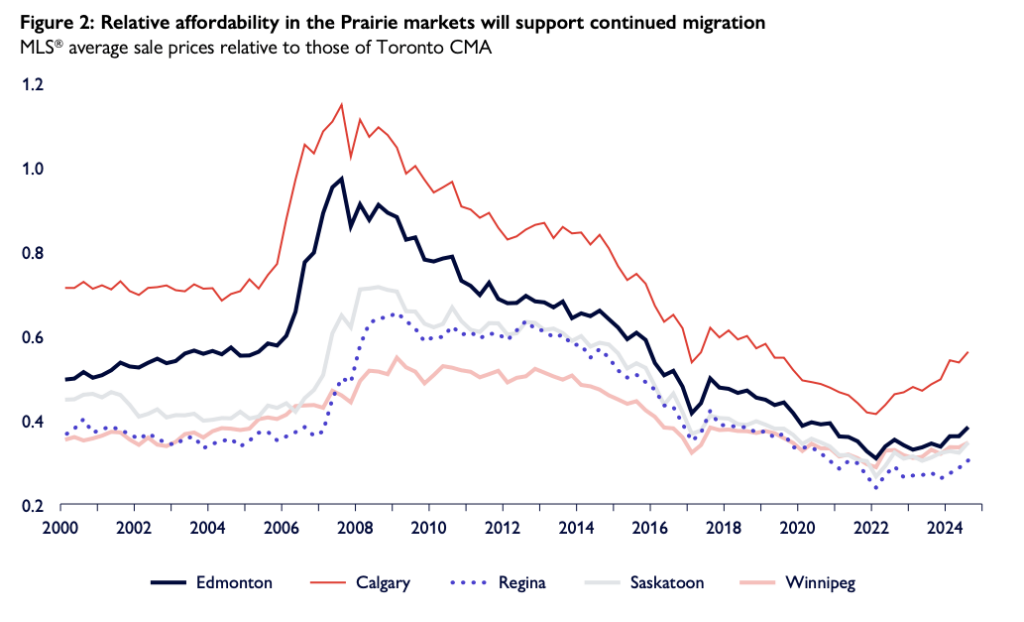
- Why It Works:
Alberta is stealing Ontario’s millennials. A $600K detached home in Calgary (vs. $1.4M in Toronto) is fueling a buying frenzy. Prices jumped 8% last year—and CMHC says that’s just the start. - Pro Tip: Target fixer-uppers in neighborhoods like Forest Lawn (Calgary) or Beverly (Edmonton). These areas are 15 minutes from downtown but still undervalued. Rent to young families or oil/gas workers on 6-month contracts.
3. London & Windsor: The Underdog Play
- Why It Works:
These smaller Ontario cities are quietly winning. London’s rental vacancy rate is stuck below 2%, and Windsor’s proximity to Detroit is attracting U.S. remote workers seeking cheap housing. A $250K duplex here can net $2,800/month in rent. - Pro Tip: Avoid student-heavy areas (thanks to immigration caps). Focus on neighborhoods like Old East Village (London) with coffee shops and breweries—they’re magnets for 30-something renters.
Red Flags Investors Can’t Ignore
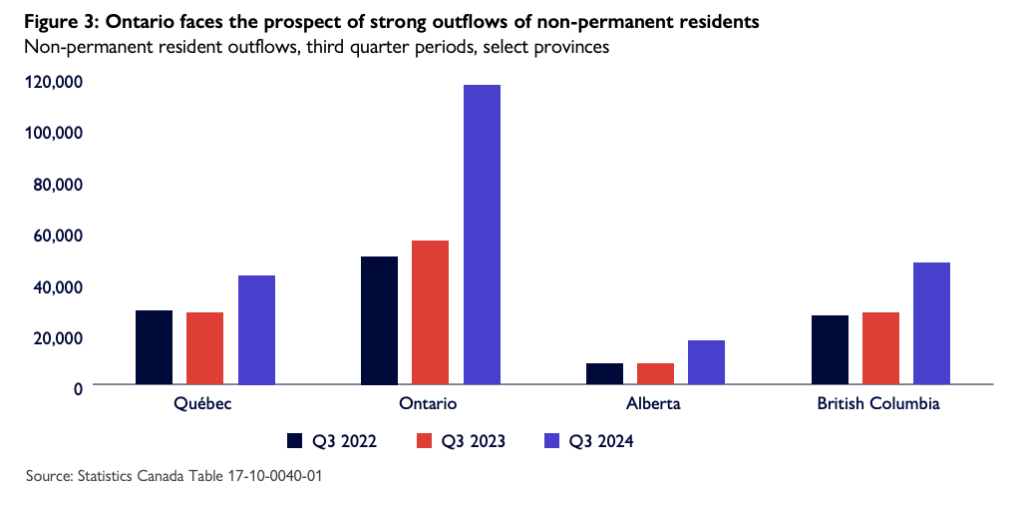
- Student Housing Roulette: Immigration cuts = fewer international students. If you own a rental near colleges (e.g., Brampton, Waterloo), brace for longer vacancies.
- The “Renewal Cliff”: Investors who bought at peak prices in 2021-2022 face mortgage renewals in 2025-2026. Many will panic-sell. Keep cash ready to scoop up distressed properties.
- U.S. Trade Wars: If Trump 2.0 slaps tariffs on Canadian goods, manufacturing hubs like Windsor or Oshawa could see job losses. Stick to cities with diversified economies (Calgary’s tech scene, Halifax’s port).
Bottom Line: How to Win in 2025
- Ditch Condos, Embrace Rentals: Governments are begging developers to build rentals—join them. Tax incentives are too good to ignore.
- Go Small(er): Forget downtown Toronto skyscrapers. A 6-unit walkup in St. Catharines or a duplex in Lethbridge will cash-flow better.
- Lock In Rates NOW: Variable rates are dropping, but fixed rates are still a steal compared to 2023. Refinance older properties to free up cash.
Final Thought: The 2025 market isn’t about getting rich quick—it’s about playing the long game. Rental demand isn’t going anywhere, and smart investors will profit by targeting where Canadians can actually afford to live.
Ready to explore off-market deals? Check out Properties For Sale curated list of cash-flow focused properties. No fluff, just results.

